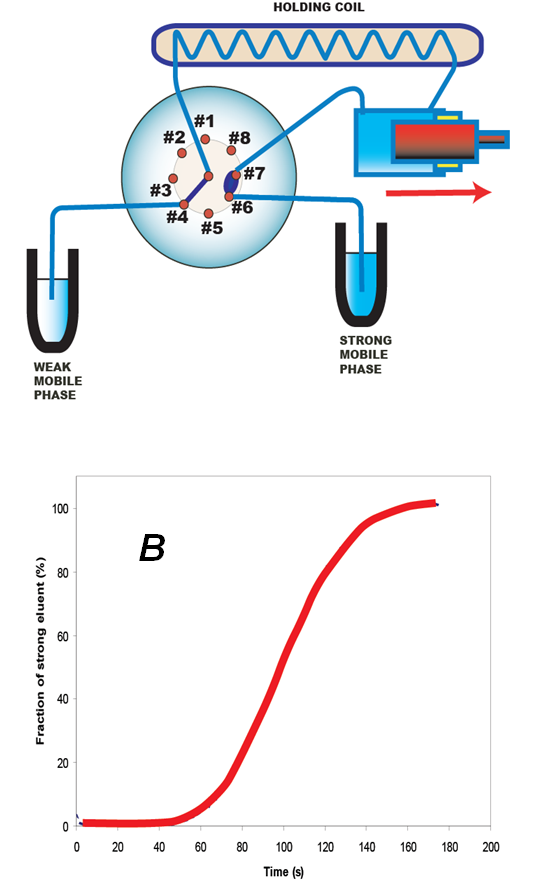Gradient Elution
4.2.4.
The traditional chromatographic instrumentation uses two pumps (high pressure mixing) or a solenoid valve manifold (low pressure mixing) to generate gradients. In contrast, SI methodology offers a simpler and less costly alternative, based on a single pump system (A).
A bolus of weak eluent is drawn into a long holding coil that initially contained a strong eluent. This creates a gradient (B) along the coil length. By applying a flow reversal, the thus formed gradient is delivered onto the column, causing the analytes to undergo gradient elution.
This single pump apparatus can generate a variety of concentration gradients (linear, flat top and inverse) by means of a flow programming, by pulse modulation technique (Herbelin 2001) featuring alternate injection of desired eluents into the holding coil.
Yet another more practical gradient elution technique, is available, the stepwise elution, which has been successfully applied to amino acid analysis by SIC (Rigobello-Masini 2008).


Rigobello-Masini M., Penteado J.C.P., Liria C.W., Miranda M.T.M., Masini J.C.: Anal. Chim. Acta 628 (2008) 123-132.
Herbelin A., Ruzicka J.: Collect. Czech. Chem. Commun. 66 (2001) 1219-1237.









